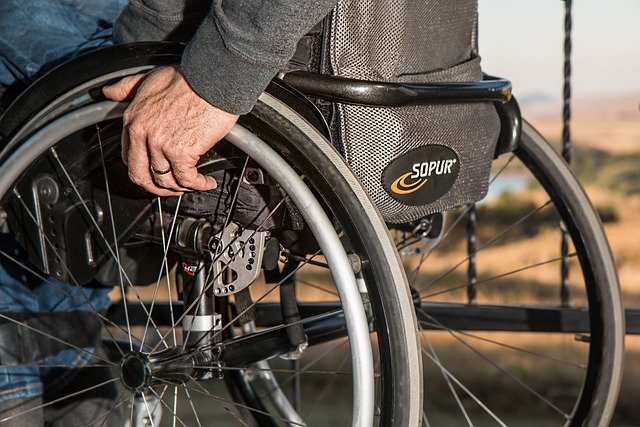Foldable Electric Wheelchairs: Features, Battery Life, and Design
Foldable electric wheelchairs combine mobility independence with practical portability, offering users the freedom to travel while maintaining comfort and safety. These innovative mobility devices feature advanced engineering that addresses battery performance, lightweight construction, and ergonomic design. Understanding the various types, features, and considerations helps users make informed decisions about their mobility needs and lifestyle requirements.

Different Types of Foldable Electric Mobility Wheelchairs and Their Features
Foldable electric wheelchairs come in several distinct categories, each designed for specific user needs and environments. Ultra-lightweight models typically weigh between 35-50 pounds and feature aluminum or carbon fiber frames that fold in seconds. Mid-weight options, ranging from 50-70 pounds, offer enhanced stability and additional features like adjustable armrests and footrests. Heavy-duty foldable models accommodate users up to 400 pounds while maintaining portability through innovative folding mechanisms. Travel-specific wheelchairs meet airline regulations and include airline-approved lithium batteries, quick-release wheels, and compact folding designs that fit in car trunks or overhead compartments.
Battery Life and Charging Options for Electric Wheelchairs
Battery performance varies significantly across foldable electric wheelchair models, with most offering 8-15 miles of range per charge. Lithium-ion batteries provide the longest lifespan and fastest charging times, typically reaching full capacity in 4-6 hours. Some models feature dual battery systems that extend range to 20+ miles and allow hot-swapping for continuous use. Smart charging technology prevents overcharging and extends battery life, while USB ports enable device charging during travel. Cold weather performance and battery degradation over time are important considerations, as extreme temperatures can reduce range by 20-30 percent.
Lightweight Materials and Portability Considerations
Modern foldable electric wheelchairs utilize advanced materials to achieve optimal weight-to-strength ratios. Aircraft-grade aluminum frames provide durability while keeping weight minimal, while carbon fiber components offer superior strength at premium price points. Magnesium alloy wheels reduce overall weight without compromising stability. Portability features include tool-free folding mechanisms, removable batteries for separate transport, and quick-release components. Folded dimensions typically range from 25-35 inches in length, allowing storage in most vehicle trunks. Weight distribution affects handling and transport ease, with well-designed models balancing the motor, battery, and frame components.
Safety Features and Stability in Foldable Wheelchair Design
Safety systems in foldable electric wheelchairs include anti-tip wheels that prevent backward falls, electromagnetic brakes that engage automatically when power is removed, and speed governors that limit maximum velocity. Stability features encompass wide wheelbase designs, low center of gravity positioning, and reinforced folding joints that maintain structural integrity. Advanced models include LED lighting systems, horn alerts, and reflective strips for visibility. Obstacle detection sensors and automatic stopping mechanisms prevent collisions, while emergency override controls allow manual operation during electrical failures.
Comfort and Ergonomic Adjustments for Daily Mobility
Ergonomic design elements significantly impact user comfort during extended use. Adjustable seat heights, backrest angles, and armrest positions accommodate various body types and preferences. Memory foam cushioning with pressure-relief properties prevents discomfort during long periods of sitting. Footrest adjustments include angle modification and height settings for proper leg support. Suspension systems in premium models absorb road vibrations and provide smoother rides over uneven surfaces. Breathable upholstery materials and temperature-regulating fabrics enhance comfort in various climates.
| Model Type | Price Range | Key Features | Battery Range |
|---|---|---|---|
| Ultra-Lightweight | $1,500-$3,000 | 35-45 lbs, airline approved | 8-12 miles |
| Mid-Weight | $2,500-$4,500 | Enhanced stability, adjustable components | 10-15 miles |
| Heavy-Duty | $3,500-$6,000 | 400 lb capacity, reinforced frame | 12-18 miles |
| Premium Travel | $4,000-$8,000 | Advanced features, dual batteries | 15-25 miles |
Prices, rates, or cost estimates mentioned in this article are based on the latest available information but may change over time. Independent research is advised before making financial decisions.
Foldable electric wheelchairs represent a significant advancement in mobility technology, offering users independence without sacrificing portability. The combination of lightweight materials, efficient battery systems, and thoughtful safety features creates devices that adapt to various lifestyles and needs. When selecting a foldable electric wheelchair, consider factors such as intended use, weight requirements, battery range, and specific comfort features. Regular maintenance of folding mechanisms, battery care, and safety system checks ensure optimal performance and longevity of these sophisticated mobility devices.




